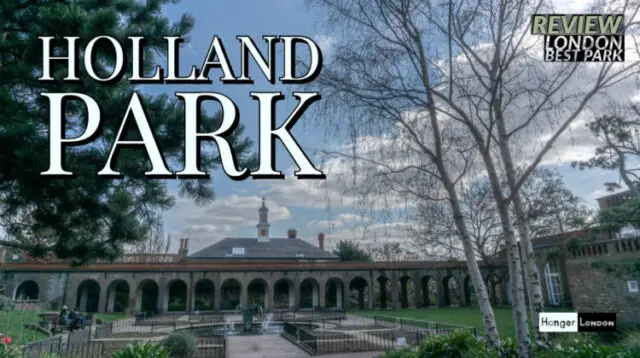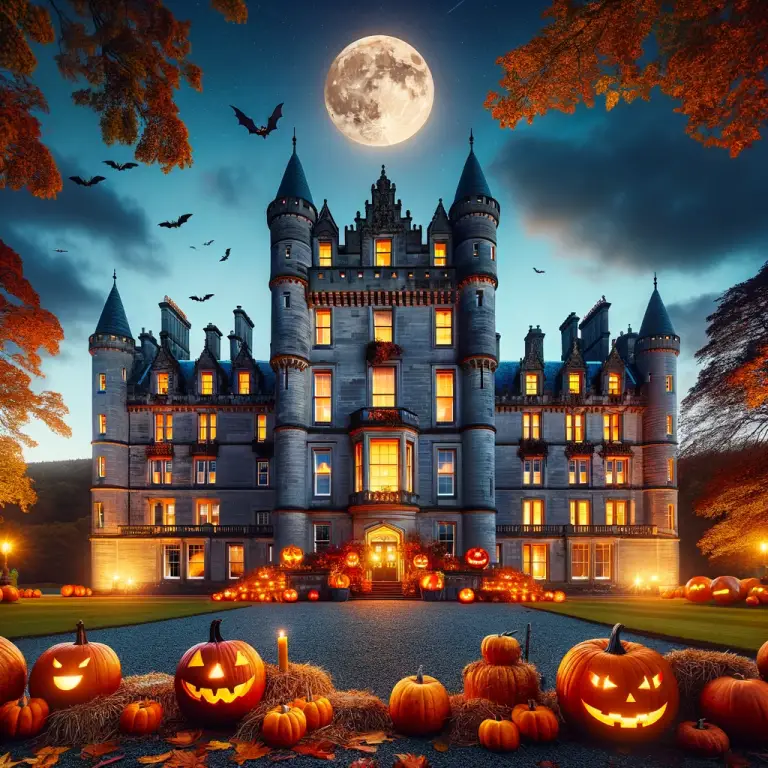There are 8 Royal Parks in London, for the casual visitor you might think Holland Park would be one of them, well it quite literally was the park that got away.
King Henry VIII seized various parcels of land in London for his deer’s, this land grab formed the present day collection of Royal Parks. It just so happens that Holland Park was not on the list.
Holland Park, the largest park in South Kensington and does indeed looks like a Royal park, it is after all the Park with a Castle. The park is truly quite unique, hidden with its depths is a Japanese Kyoto garden and an impressive woodland walk that makes you forget that you are still in Kensington & Chelsea W11. The park is 22.5 hectares equivalent to 54 acres. The curated gardens have been worked consistently from the 17th, 18th, and 19th Centuries, and continue to be looked after today.
King Henry VIII and his land grab of parks
Thanks to King Henry VIII, London has some of the finest green spaces of any city. For it was this King, with an appetite for hunting that he acquisitioned parks and green spaces for his deer and hunting activities. These green strips of London became the property of the Crown.
Holland Park would have a different trajectory, King Henry VIII did not add it to his collection.
top themed picks on the Amazon store…
The Jacobean castle in Holland Park
Sir Walter Cope built Cope Castle, which was a Jacobean mansion hidden in the woods of Holland Park, around 1605-1608. Sir Walter Cope was Chancellor of the Exchequer During the reign of King Charles I, who stayed at Cope Castle once in 1612. Covered in exotic plants and trees. The estate’s gardener was John Tradescant.
The pillars to support a new imposing gate were built in 1629 and still be seen today, though the original gates have long gone.
Sir Walter Cope son-in-law Sir Henry Rich, 1st Earl of Holland took over the house where Cope Castle became Holland House. The 1st Earl of Holland joined parliament but switched sides with the Royalists. Military action during the civil war ended with his capture, arrest, and trail for Treason. Sir Henry Rich would hold that it was on condition of surrender that they spare his life, on the 9th March 1649, that was not to be and they executed him at Westminster Hall. It is said that the Ghost of the first Earl of Holland Park has been seen walking the area.
Dutch Garden in Holland Park
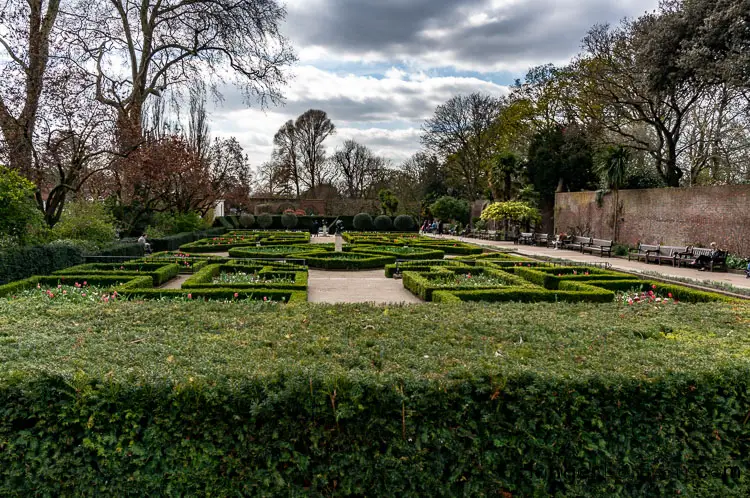
The Dutch Garden in Holland Park is a stunning example of a traditional geometric garden design. This beautiful garden is located in the heart of Holland Park in London, and is a popular destination for visitors seeking a tranquil space to relax and enjoy the beauty of nature.
Set out in a formal geometric structure, the Dutch Garden is comprised of neatly trimmed hedges, flower beds, and intricate pathways that lead visitors through the garden’s many different sections. The garden is carefully curated with a variety of plants, including beautiful blooms of tulips, roses, and other vibrant flowers.
The Dutch Garden was originally designed by the renowned garden designer, Thomas Mawson, in 1908. The garden’s layout was inspired by traditional Dutch garden designs, which are known for their symmetry and geometric shapes. The garden’s central feature is a beautiful pond, which is surrounded by carefully planted shrubs and trees.
Throughout the year, the Dutch Garden transforms with the changing seasons. In spring, the garden bursts into color as the tulips and daffodils bloom. In summer, the garden is filled with roses and other beautiful flowers. In autumn, the leaves of the trees turn golden and red, creating a spectacular display of color.
Visitors to the Dutch Garden can enjoy the peaceful surroundings, take a leisurely stroll along the garden paths, or simply relax on one of the garden benches and take in the beautiful scenery. The garden is open to the public throughout the year, and admission is free.
Holland House in the footsteps of Dickens and Disraeli
Holland House takes it name from Henry Rich, earl of Holland, whose father in law was Sir Walter Cope. The house was built in 1607 by the famous architect John Thorpe. The House today is a shadow of the house that once was. The upper floors have all but gone, leaving a low level impression of its former glory.
During the time of Lord Holland, Holland House became the political and social hub, drawing in some of the famous names of the time. Visitors to Holland house where many with notables such as Writer Charles Dickens, Prime Minister and politician Benjamin Disraeli, the poet Thomas Campbell, writer Walter Scott, poet Lord Byron and historian & poet Lord Thomas Babington Macaulay.
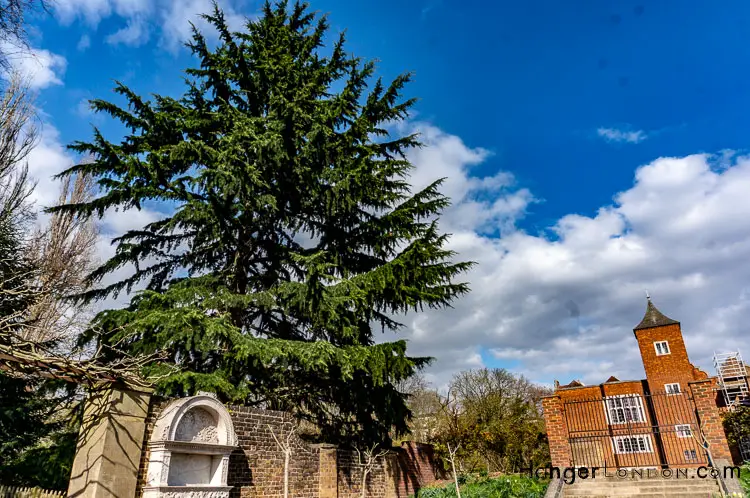
The Remains of Holland House
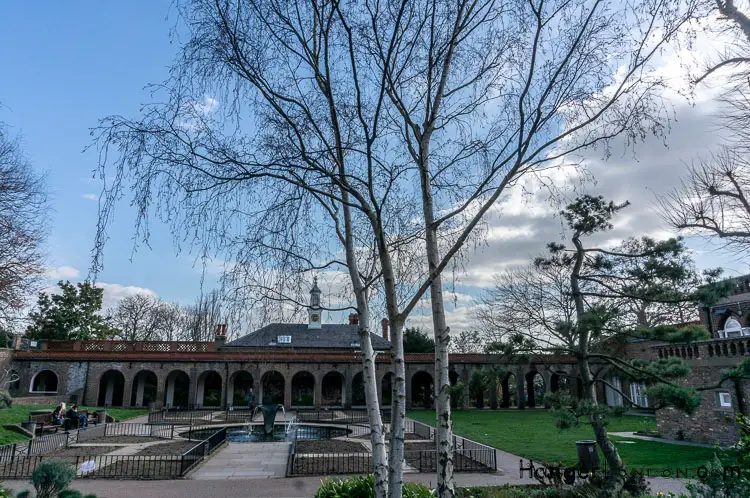
Holland House, once a grand mansion in the heart of Holland Park, was one of the most magnificent homes in London during its heyday. Unfortunately, the house was largely destroyed during the Second World War, leaving only a few remains of the original structure, including some impressive archways and patios.
Today, visitors to Holland Park can still see the remains of Holland House, which have been preserved as a reminder of the house’s former grandeur. The archways and patios are particularly impressive, with their intricate stonework and ornate carvings, which are still in remarkably good condition considering the destruction that the house suffered.
One of the most impressive features of the remains of Holland House is the Spanish Garden, which was designed by Lord Holland in the early 19th century. The garden features a series of arches and columns, which create an elegant and tranquil space that is perfect for relaxing or taking in the views of the surrounding park.
Another notable feature of the remains of Holland House is the terrace, which was once a grand patio that overlooked the gardens of the house. Although the patio has now largely fallen into disrepair, visitors can still see the impressive stone columns and archways that once formed part of the patio’s structure.
Despite the destruction of the house, the remains of Holland House are a testament to the grandeur of this once-magnificent mansion. The archways and patios that have survived serve as a reminder of the incredible architectural and artistic skill that went into the construction of this historic building, and are a must-see for anyone visiting Holland Park.
Holland House and the English Civil War
During the English Civil War, Holland House, a grand mansion located in what is now known as Holland Park in London, played an important role in the conflict. In 1642, the house was commandeered by the parliamentary army, which used it as a base of operations for their troops. The house was then fortified, and the surrounding gardens were turned into a military encampment.
One of the most notable figures to stay at Holland House during this period was Oliver Cromwell, who was a leading general in the parliamentary army. Cromwell used the house as his headquarters, and it was from here that he launched a series of successful military campaigns against the royalist forces.
Despite being heavily fortified, Holland House was eventually captured by the royalist army in 1644. The house was badly damaged during the siege, and many of its treasures were looted or destroyed. However, the house was later repaired and restored to its former glory, and it remained a grand mansion for several centuries.
Today, visitors to Holland Park can still see the remains of the fortifications that were built during the Civil War, including a section of the old defensive wall that was constructed around the house. These historic features serve as a reminder of the important role that Holland House played during one of the most tumultuous periods in English history
Sites and sounds of Holland Park
William Kent and Charles Hamilton designed the park layout in the early to mid-18th Century.
Despite the park having vast historical heritage, it was only open to the public from 1952.
A fire from an incendiary bomb-damaged Holland House in 1940, the damage and ruins you can still see today.
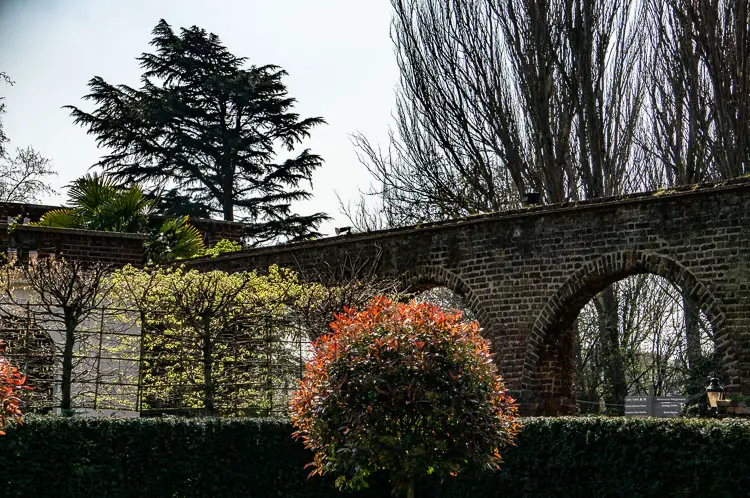
The international elements of the gardens feature a Dutch Garden, decorative flower beds in geometric patterns, terraces, and a Japanese garden area.
The Japanese-inspired Kyoto Garden in Holland Park.
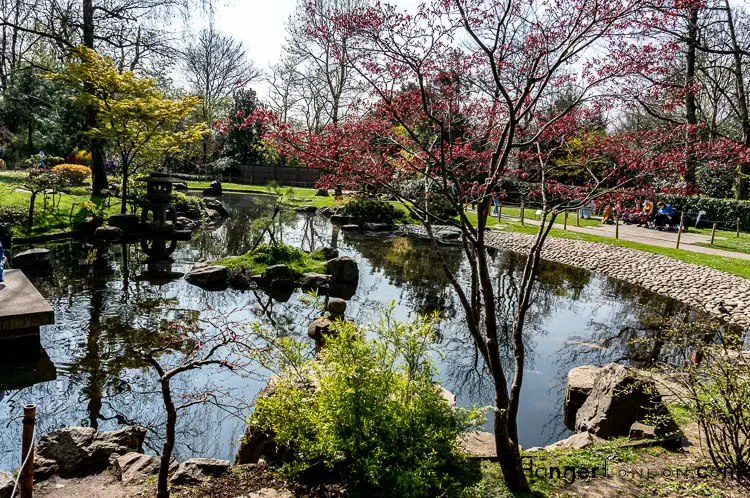
The Kyoto Garden in Holland Park is a beautiful Japanese-inspired garden located in London, UK. It was opened in 1991 and was designed by Japanese garden designer, Yasuo Kitayama. The garden is a peaceful retreat that offers visitors an opportunity to experience the serenity and beauty of traditional Japanese gardens. The garden features a large pond, a waterfall, and a rock garden, as well as a variety of plants and trees that are native to Japan. The garden is also home to a variety of fish, birds, and other wildlife, adding to its natural beauty. The Kyoto Garden is a popular destination for visitors to London who are looking for a quiet and serene escape from the hustle and bustle of the city. It is a beautiful tribute to Japanese culture and is a must-visit destination for anyone interested in gardens and nature.
By the Chamber of Commerce of Kyoto in 1991. This was to be part of the London celebrations of the Japan Festival in 1992.
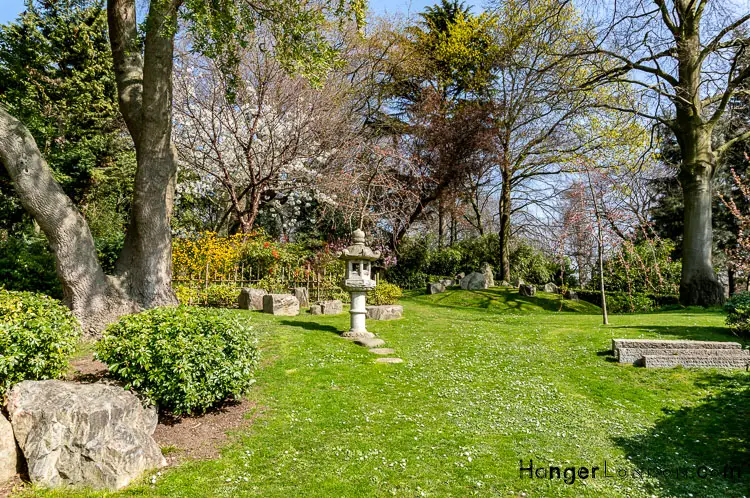
What is Kyoto Style?
Kyoto style refers to a traditional Japanese aesthetic that originated in Kyoto, a city in Japan that was the imperial capital for over 1,000 years. Kyoto style is characterized by refined elegance and simplicity, with an emphasis on natural materials and subtle, understated beauty. The style is often associated with traditional Japanese crafts, such as ceramics, textiles, and lacquerware, as well as with architecture and garden design. In Kyoto style, there is a strong appreciation for the beauty of imperfection and the natural aging process of materials. This aesthetic is often reflected in the use of materials like weathered wood, worn stone, and rusted metal, which are valued for their natural patina and texture. Overall, Kyoto style is a celebration of the beauty of simplicity and natural materials, and it continues to inspire artists and designers around the world.
Japonica Kerria, Japanese Yellow pompom blossom
Japonica Kerria, also known as Japanese Kerria or simply Kerria, is a deciduous shrub that is native to China, Japan, and Korea. It is a popular ornamental plant in gardens and parks around the world, known for its beautiful yellow pompom-like flowers that bloom in the spring.
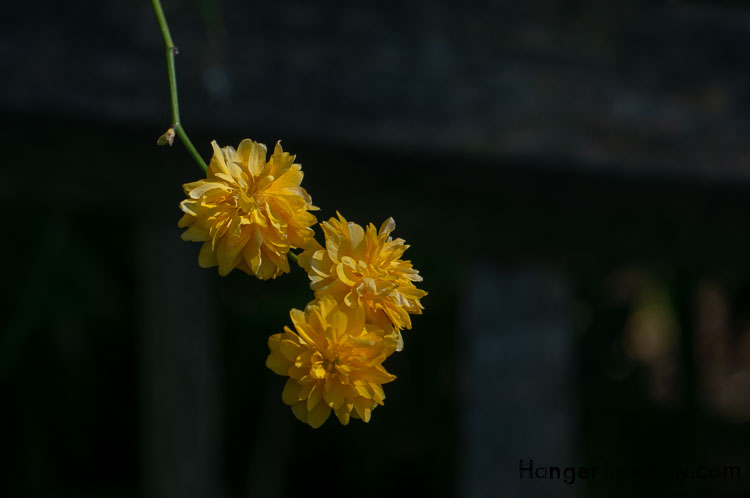
The flowers are small and bright yellow, and they form dense clusters on the ends of the shrub’s branches, creating a vibrant display of color. The plant has dark green leaves that provide a beautiful contrast to the bright yellow flowers. Japonica Kerria is a hardy shrub that can thrive in a range of soil types and is relatively easy to care for. It is a great choice for adding a splash of color to a garden or landscape and is often used in Japanese garden designs due to its delicate beauty and cultural significance.
Pink Blossom Tress in Holland Park
Holland Park is known for its stunning collection of cherry blossom trees. In the springtime, the park comes alive with the beautiful pink blooms of the cherry blossom trees, creating a breathtaking display of natural beauty.
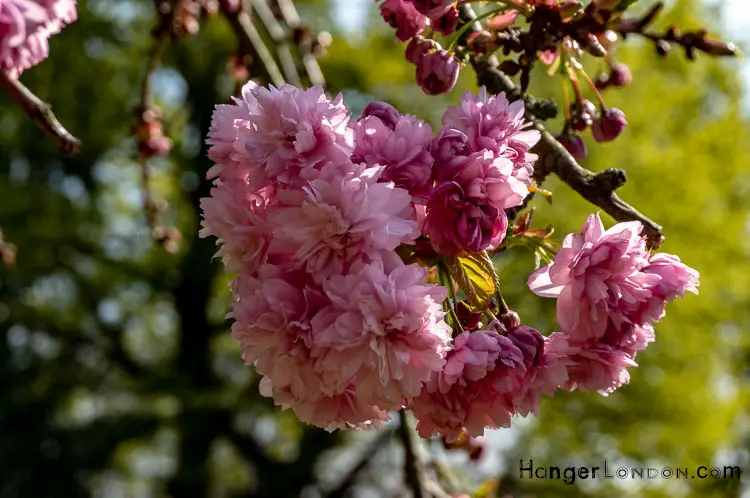
The pink cherry blossoms are a symbol of renewal and new beginnings and are highly regarded in Japanese culture, where they are known as Sakura. The trees were first planted in Holland Park in the 1960s as a gift from the Japanese government to the city of London, and they have since become a beloved feature of the park. Visitors flock to the park in the spring to enjoy the beauty of the cherry blossoms and to take part in Hanami, the Japanese tradition of flower viewing. The pink cherry blossoms of Holland Park are a beautiful representation of the natural world and are a reminder of the power and beauty of nature.
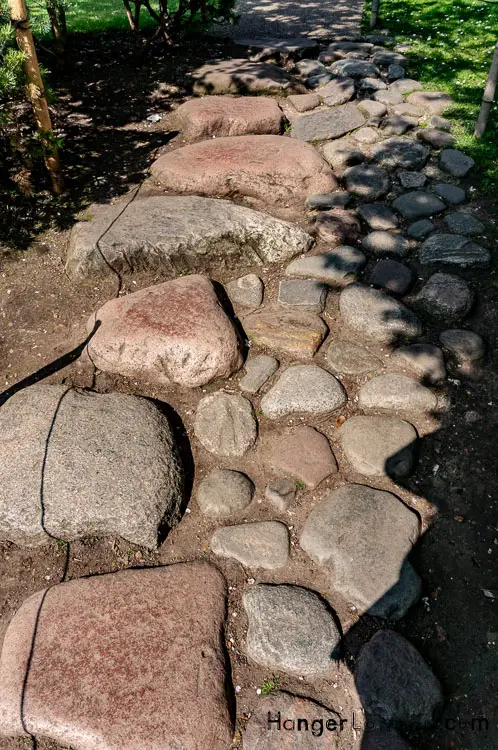
Japanese Garden Waterfall
The waterfall is located in the Kyoto Garden, a peaceful and serene retreat that was designed by Japanese garden designer, Yasuo Kitayama. The waterfall is a central feature of the garden and is designed to be a calming and soothing element that brings tranquility to the space.
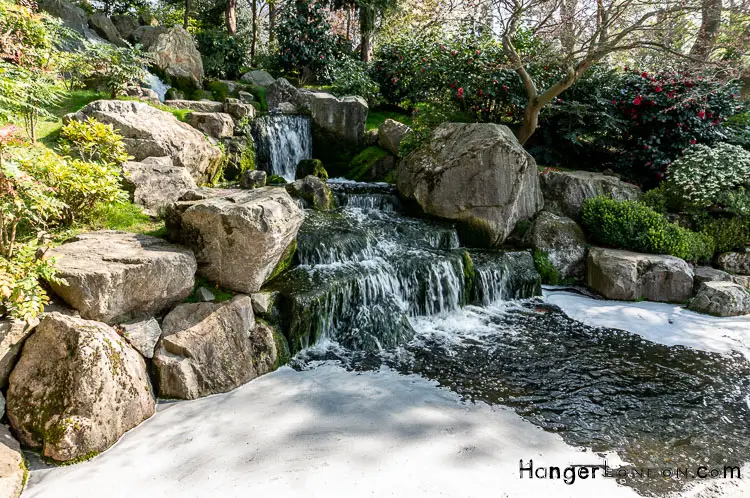
The water flows gently over a series of rocks, creating a natural and peaceful sound that adds to the overall sense of serenity in the garden. The waterfall is surrounded by lush greenery and a variety of native Japanese plants, creating a beautiful and authentic Japanese atmosphere. Visitors to Holland Park can enjoy the beauty of the waterfall and the Kyoto Garden, which offers a peaceful escape from the busy streets of London.
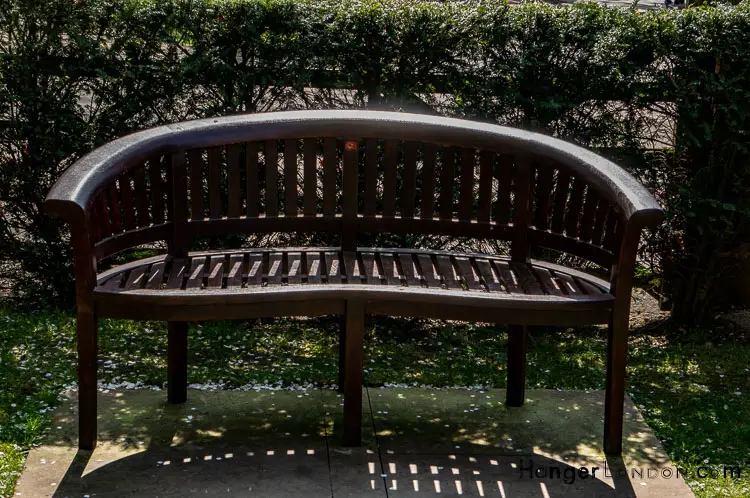
Themed sections like Iris Garden with a little pool, Azalea Walk was known as Rose Walk before which had been started by Lady llchester around 1894. This walk leads to the statue of the 3rd Lord Holland. In 1876 the 4th Lady Holland planted Lime-Tree Avenue westward from the statue. These mostly had to be replaced in 1987 due to October storms.
Woodland walks in Holland Park
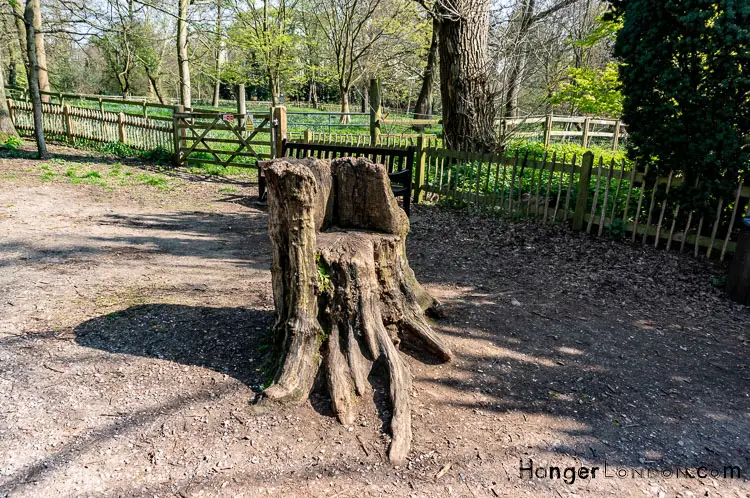
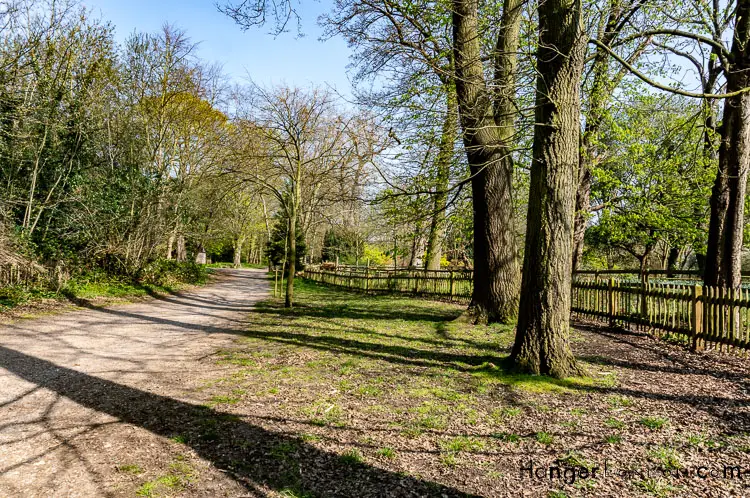
Sun Terrace features seating and flower beds on several levels with a birdbath designed for disabled access.
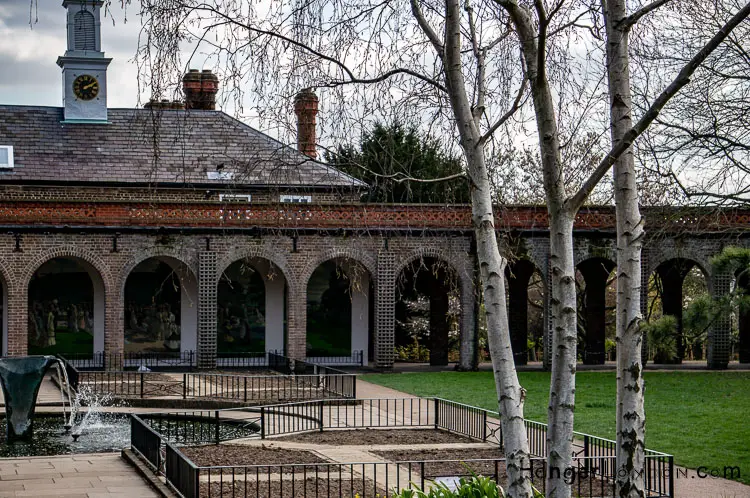
Kensington High Street Entrance invites with large decorative 18thC wrought iron gates that were Belgian. Bought by the 3rdLord Holland in 1836
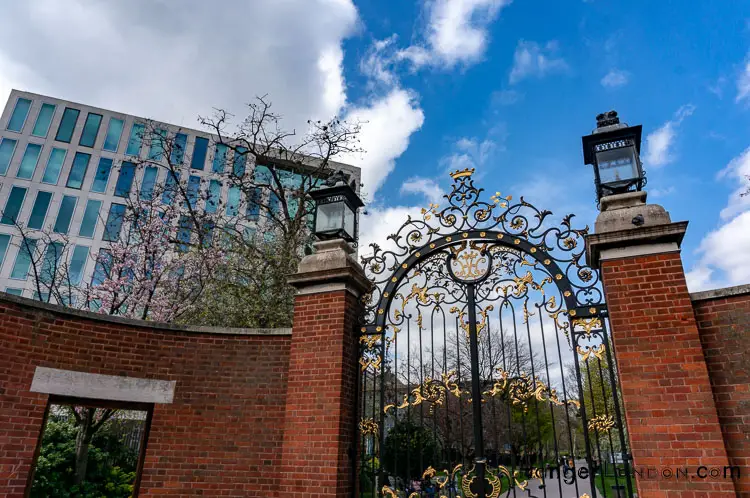
Ecology service base for the borough. They run events for the public and schools and educational programs.
Adventure playground open summer 2019
Walking Man sculpture by Sean Henry year 2010.
Size 193 x 61 x 71 cm painted bronze.
The Artist looks at perception and scales real-life experiences, human existence
Horns, cogs sculpture
Annunciation by Andrew Burton 2000
Symbolises passage of time a New Era. The sculpture was part of a collective that celebrated the Millennium. The Artist heads the Department of Fine Art at New Castle upon Tyne University. Having an interest in Indian Culture and artefacts.
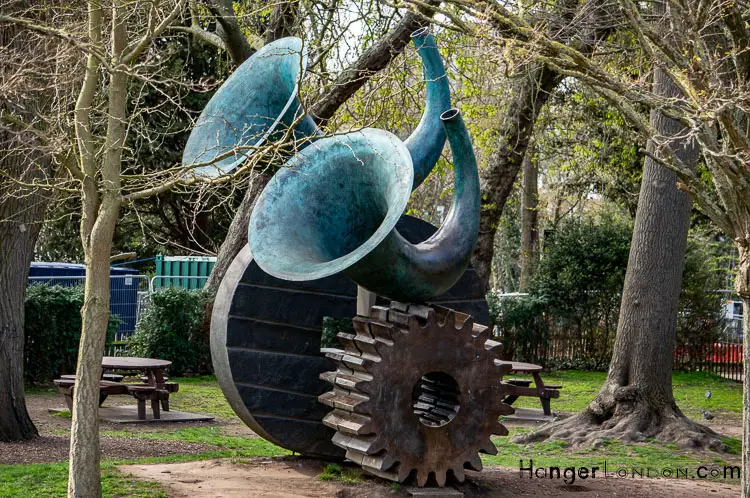
Armillary sphere
By Oliver Gero c 1986.
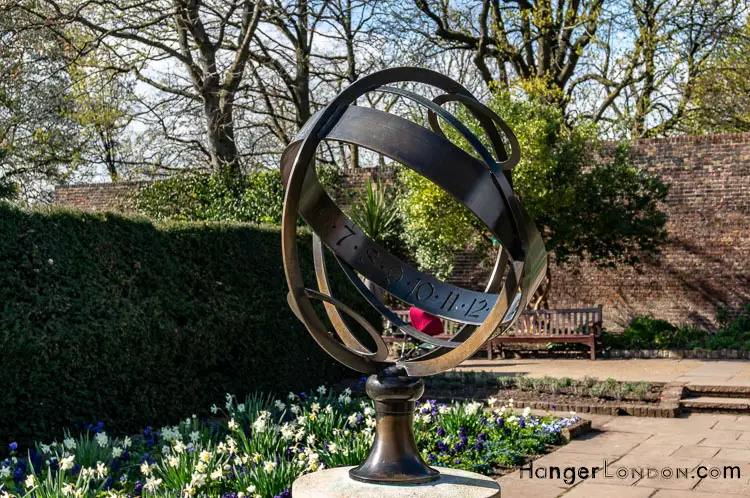
Based on the original sphere that became so decayed that it had to be remade. 19th C paintings showed images of the gardens featuring the original Armillary sphere between the two fountains and dividing the gardens.
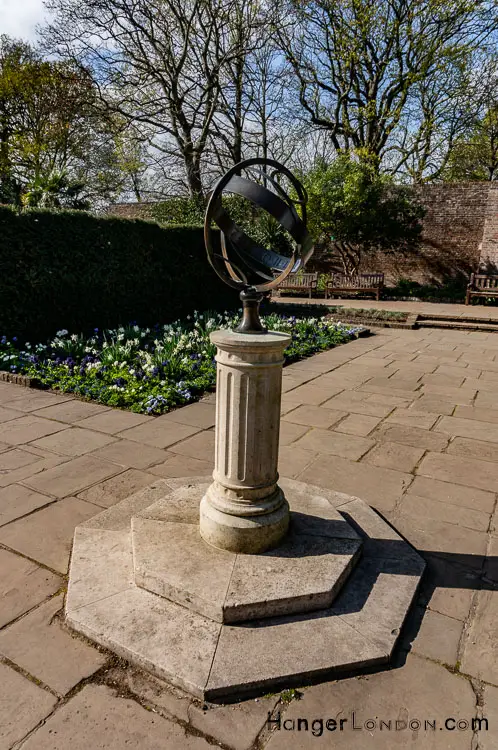
These spheres are a Sundial, inside the Holland Park structure it depicts the equator circle and the hours of the day are marked. When a shadow from the sun casts a mark by the north pole/ south pole axis rod which is pointing due North is can reveal the time.
Armillae is a Latin word for several rings, used in the celestial astronomical analysis, developed by A Green Ptolemy who was an astronomer and philosopher.
The glorious Dutch Garden found in Holland Park
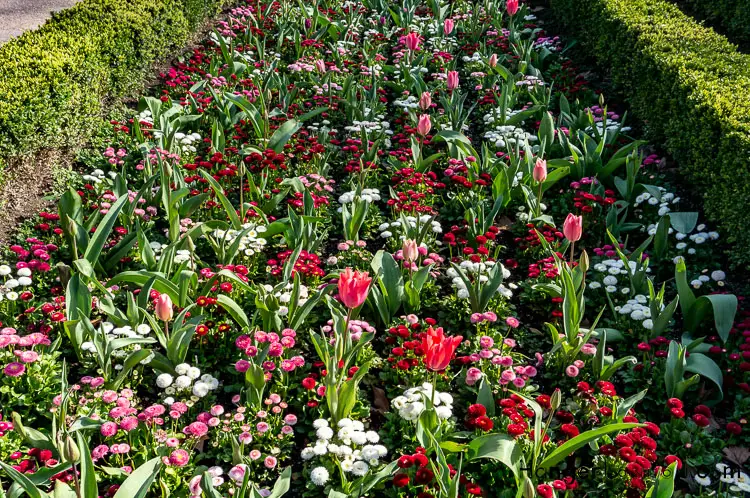
Lord Holland legally closed the right of way that had passed in front of his house. He agreed to open another public right of way which runs along the eastern perimeter to the right-hand side if you enter from Kensington High street.
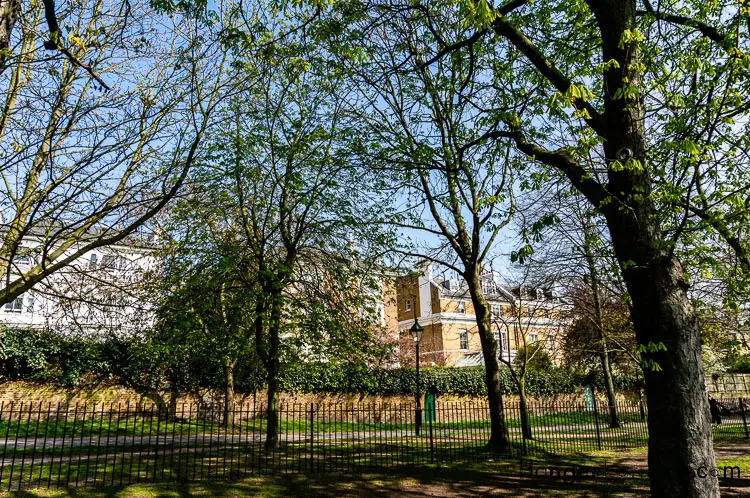
The 17th Century Belvedere restaurant in Holland Park
17th Century Holland house had a ballroom for its mansion guests. It is now the Belvedere restaurant and has beautiful camelia and magnolia outside it.
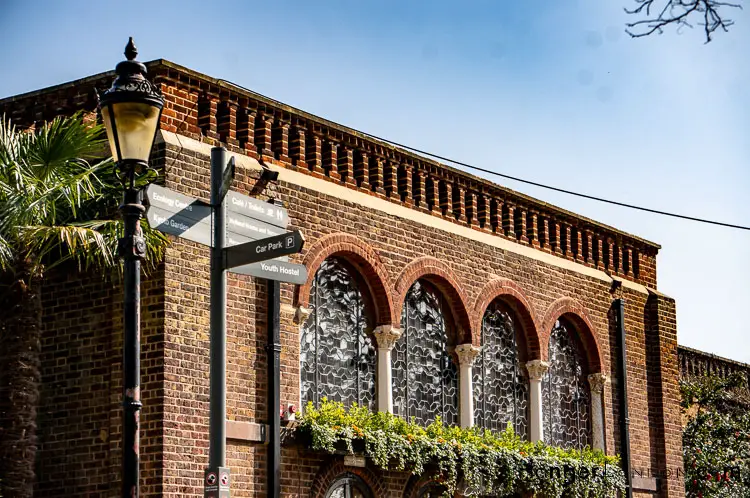
They restored East Wing of Holland House and turned into a Youth Hostel in 1957.
Children’s play area. Also, an adventure playground that will reopen summer 2019. Tennis Courts
Where is Holland Park
Holland Park, Royal Borough of Kensington and Chelsea, England, United Kingdom

